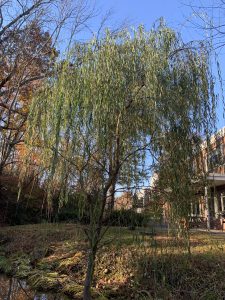
I arrived at my sit-spot at 9:00am – 9:37am on November 9, and it was 57 degrees Fahrenheit. There was no wind or cloud cover, but the sun was shining bright with a slight tilt towards the east because it was so earl in the morning. As I was walking up to my sit spot, I was looking really hard for something that I thought was interesting to learn about, and that’s when I saw this sort of tree that seemed to be sad. I discovered the name of this tree is indeed a weeping willow, aka Salix babylonica.
As I was walking towards the tree, I didn’t notice to size of the leaves until I was up close to the tree. The leaves were the length of my hand and some were longer than my hand. There were subtle lobes running down the side of the leaf, and the leaf had a waxy feeling on both sides. The top if the leaves were dark green and the underside was a lighter green. The leaves did not seem to change color during the fall season, it seemed that the leaves were thinning out. The branches of the tree came down like they were facing the ground rather than growing up towards the sun like most trees do. I also found it interesting how there were so many branches coming off from the trunk.
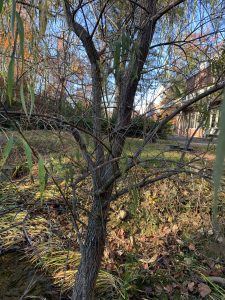
The weeping willow originated in Northern China and made its way to North America many years after being traded in the silk road (UVM Tree Profiles). The weeping willow can grow in all kinds of soil, but they do prefer full sun and partial shade and need lots of water (Pace University). These trees can be found along rivers and stream beds where there is lots of moisture (UVM Tree Profiles). The leaves grow in alternating patterns and are arranged in a spiral. The flowers that grow on these trees are called catkins that 3-4 centimeters long (Pace University).
To identify this plant, I simply searched “trees that look sad” on google and the first thing that popped was the weeping willow that looked exactly like the picture/tree that I saw at my sit-spot. The process of identifying species is so interesting to me. I feel like I am a scientist making a new discovery when I am able to identify what species I find. I really enjoy going on into nature and discovering new things so when I am out with friends, I can name off the different type of species and they will think I am smart.
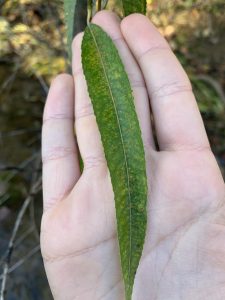
Omeka@CTL: UVM Tree Profiles : Weeping Willow : Weeping Willow- Natural History. (n.d.). Retrieved November 12, 2020, from http://badger.uvm.edu/omeka/exhibits/show/uvmtrees/weeping-willow-introduction/weeping-willow-history
Weeping Willow – Pace University. (n.d.). Retrieved November 12, 2020, from http://webpage.pace.edu/naturespace/Weeping%20Willow.htm

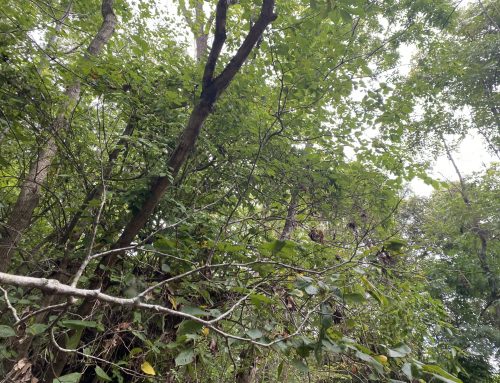
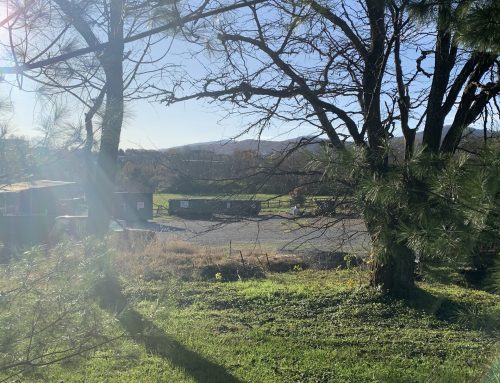
Leave A Comment
You must be logged in to post a comment.